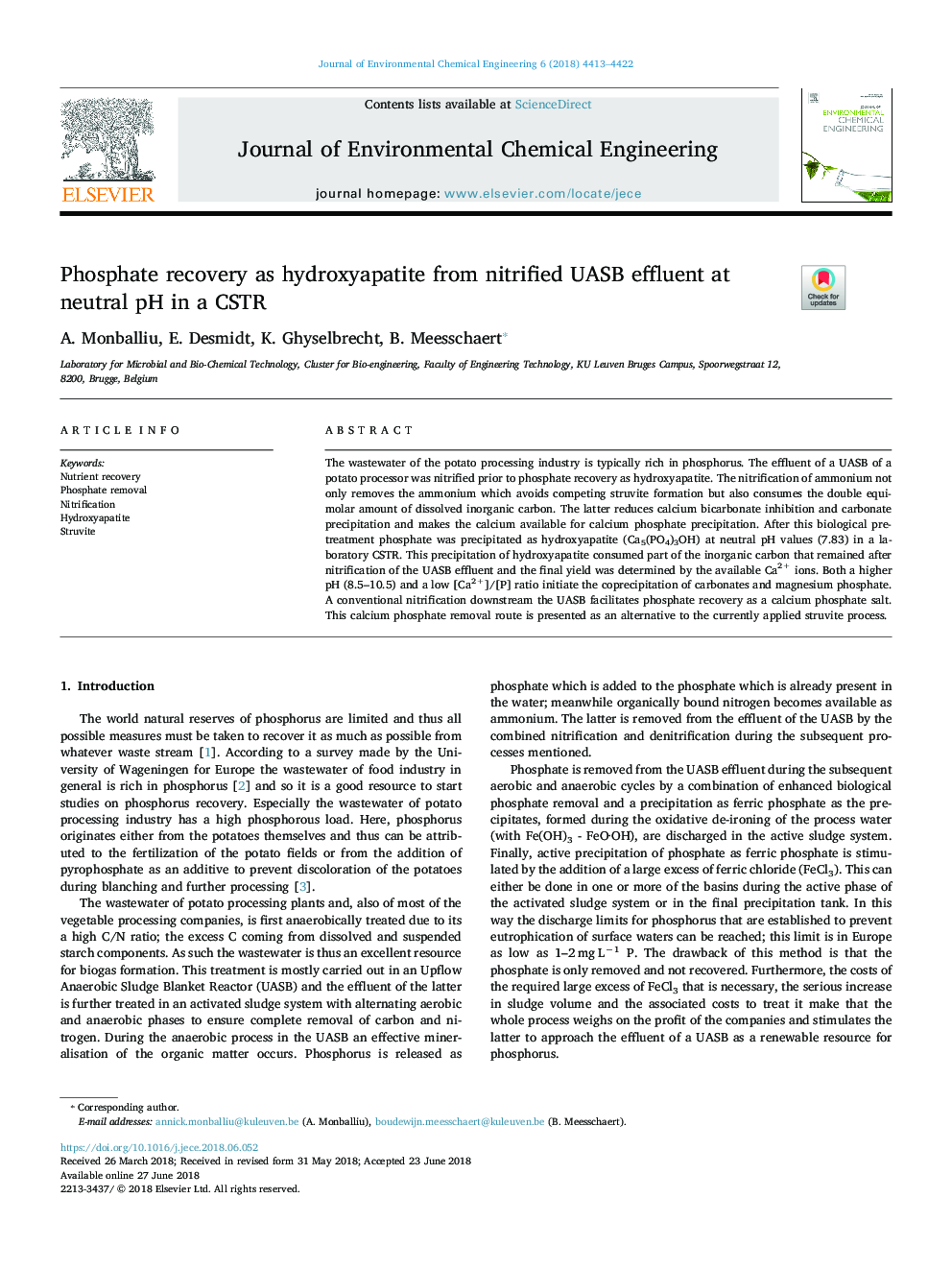| Article ID | Journal | Published Year | Pages | File Type |
|---|---|---|---|---|
| 6663893 | Journal of Environmental Chemical Engineering | 2018 | 10 Pages |
Abstract
The wastewater of the potato processing industry is typically rich in phosphorus. The effluent of a UASB of a potato processor was nitrified prior to phosphate recovery as hydroxyapatite. The nitrification of ammonium not only removes the ammonium which avoids competing struvite formation but also consumes the double equimolar amount of dissolved inorganic carbon. The latter reduces calcium bicarbonate inhibition and carbonate precipitation and makes the calcium available for calcium phosphate precipitation. After this biological pre-treatment phosphate was precipitated as hydroxyapatite (Ca5(PO4)3OH) at neutral pH values (7.83) in a laboratory CSTR. This precipitation of hydroxyapatite consumed part of the inorganic carbon that remained after nitrification of the UASB effluent and the final yield was determined by the available Ca2+ ions. Both a higher pH (8.5-10.5) and a low [Ca2+]/[P] ratio initiate the coprecipitation of carbonates and magnesium phosphate. A conventional nitrification downstream the UASB facilitates phosphate recovery as a calcium phosphate salt. This calcium phosphate removal route is presented as an alternative to the currently applied struvite process.
Related Topics
Physical Sciences and Engineering
Chemical Engineering
Chemical Engineering (General)
Authors
A. Monballiu, E. Desmidt, K. Ghyselbrecht, B. Meesschaert,
